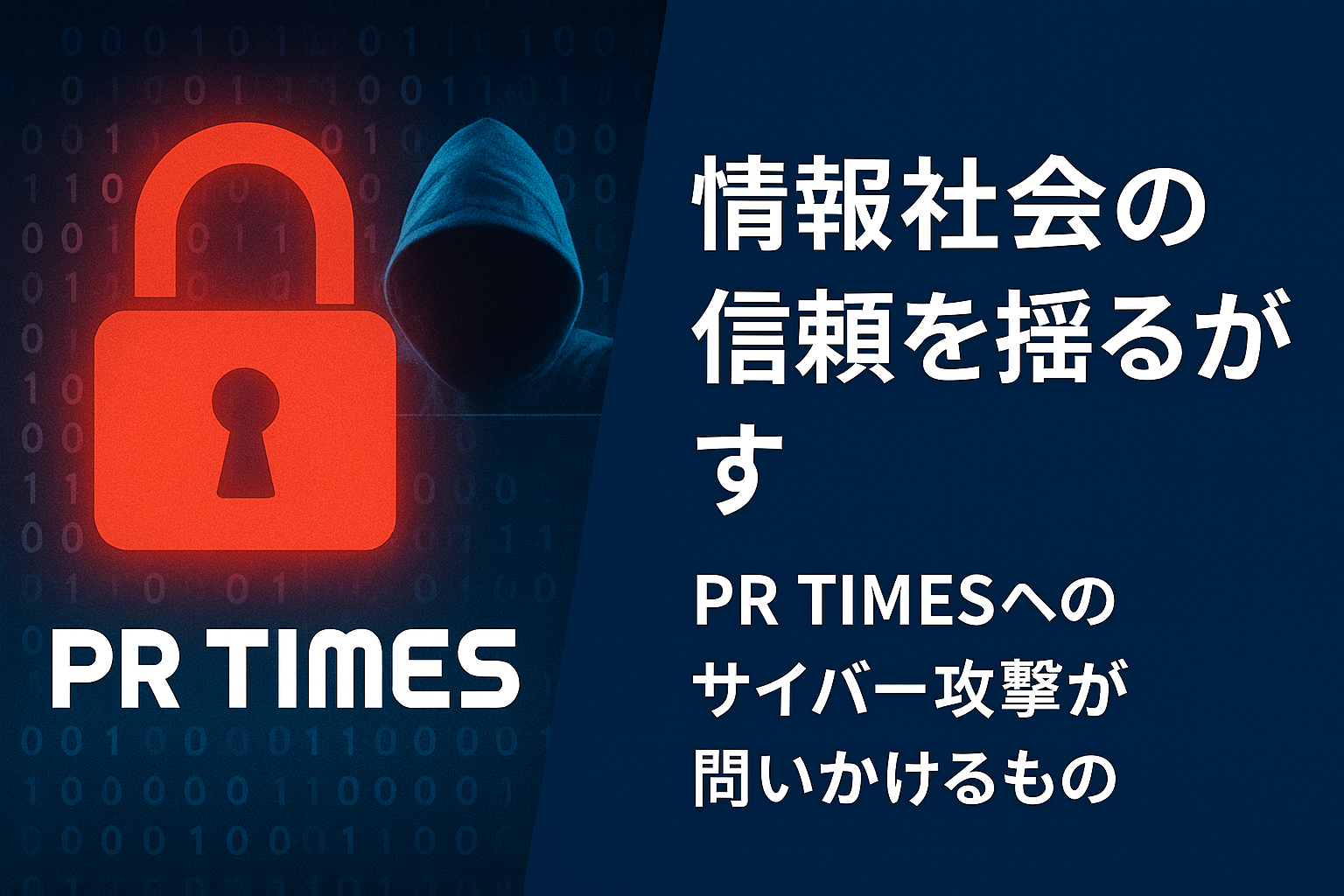A Stark Reminder from the PR TIMES Cyberattack
On May 7, 2025, PR TIMES, a company providing press release distribution services, announced a potential leak of over 900,000 personal records and sensitive pre-release information. This incident strikes at the very core of “trust and security in information,” a foundation for corporate public relations. It is not merely a system issue—it calls into question the very infrastructure of trust in the information society.
Overview and Severity of the Incident
PR TIMES serves as a platform for the official dissemination of information from companies. The potential leak of unreleased materials and personal information of public relations personnel represents a collapse of information management within corporate PR.
Two particularly alarming aspects are:
- The leak included 1,682 unreleased press releases
- Approximately 900,000 individual personal data records were affected
Timeline and Evaluation of Corporate Response
April 25: Anomalies detected → Confirmation of unauthorized access → Access route blocked and mitigation steps taken → May 7: Official announcement.
During this period, PR TIMES prioritized reporting to the police, which has raised public concerns over a delay in disclosure. Even if the company made its decisions with legal and investigative considerations in mind, whether “transparency” was adequately maintained remains to be examined.
Security and Ethics Expected of a Corporate PR Platform
PR TIMES plays a critical role in delivering information “quickly and accurately” to society. This incident highlights the need for fundamental improvements, such as:
- Mandatory two-factor authentication and more granular access control
- Strengthened encryption and automatic deletion protocols for unpublished content
- Regular vulnerability assessments to defend against external threats
- Immediate leak notification flows and coordination frameworks with public agencies
These measures are not just IT security issues—they are directly tied to corporate social responsibility (CSR) and public trust.
Reconsidering the Role of PR as “Trust Infrastructure” in the Information Age
In an age where social media dominates and anyone can disseminate information, a loss of trust in primary sources like PR TIMES could lead to widespread information chaos. This incident should serve as a catalyst for rethinking both corporate PR strategies and overall media literacy.
Preventing Recurrence Requires Both Technology and Integrity
While PR TIMES deserves credit for its swift response and investigation, what is now required is proactive security and transparent information disclosure.
Protecting trust demands not only technological measures but also sincere attitudes during crises. It is hoped that this incident serves as a wake-up call for the entire information distribution industry.

